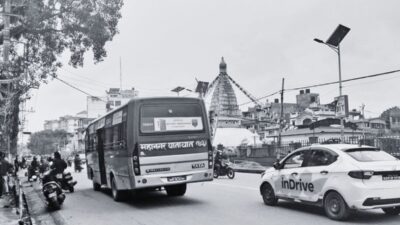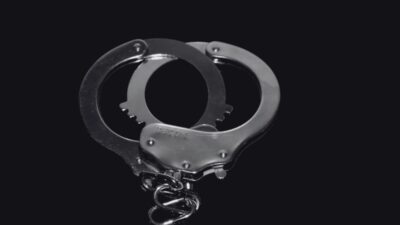Now Reading: SONEUK Call for Metro Rail in Kathmandu Valley: $25 Billion Project Proposed
- 01
SONEUK Call for Metro Rail in Kathmandu Valley: $25 Billion Project Proposed
SONEUK Call for Metro Rail in Kathmandu Valley: $25 Billion Project Proposed

The Society of Nepalese Engineers in the UK (SONEUK) recently held its 10th Annual Conference in Cambridge, with a strong focus on science, technology, and engineering. Among the eight technical papers presented, one captured significant attention: a comprehensive framework for developing a metro rail system in the Greater Kathmandu Valley.
A Vision for Urban Mobility
The proposal was presented by civil engineer Dr. Binod Lal Amatya, who laid out a detailed plan for a metro system linking all 18 municipalities within the valley. According to him, five major metro lines radiating from the city center would connect the valley east-west and north-south, covering 192.5 km in total.
The estimated cost for the complete project, including land acquisition, is $25 billion.
Dr. Amatya proposed that a smaller phase — connecting Banepa, Bhirkutimandap, and Thankot under the Kathmandu Line, and Godawari to Budhanilkantha via Patan under the Patan Line — would span 62.5 km, require around $10 billion, and take 12 years to complete.
Employment & Economic Impact
The two-line phase alone would create 3,500 permanent jobs and generate thousands more during construction. The broader economic benefits, Dr. Amatya argues, would include a boost to GDP, a rise in commercial units, and growth across construction and materials industries.
He added that funding such a massive project is possible through a mix of:
- Foreign Direct Investment (FDI)
- Soft loans
- Green Climate Fund contributions
- Tax revenue
- Public share offerings
- Private sector investment
Engineers Ready to Help
Dr. Amatya, who has worked with UK-based consultancy RSK Group for 15 years, has been advocating for this vision ever since he moved to the UK. During a recent event held at the Nepali Embassy in London — attended by UML General Secretary Shankar Pokharel and Ambassador Chandra Kumar Ghimire — SONEUK President Subodh Timilsina and Dr. Amatya reiterated that Nepali engineers abroad are ready to contribute their expertise.
They emphasized: “Kathmandu Valley desperately needs a metro system. If we start now with a clear masterplan, it could be operational in 20 years.”
Why Metro, Why Now?
Experts argue that Kathmandu’s unchecked urban sprawl, fueled by dreams of employment and a better life, has turned the valley into a concrete jungle. Traffic congestion alone causes $1.2 billion in losses annually, according to a study by Dr. S. Chand — with costs linked to fuel, time delays, road maintenance, emissions, and accident rates.
With 50% of air pollution in Kathmandu caused by vehicles, a sustainable public transport alternative like metro rail is urgently needed.
The proposed metro framework also includes:
- Mobility and connectivity enhancement
- Underground space utilization
- Transit-oriented urban development
- Cultural and green space conservation
- Economic stimulation through integrated transport systems
Past Attempts and Missed Opportunities
This isn’t Nepal’s first brush with metro ambitions. In 2012, the Department of Railways started a feasibility study with Korean consultants, later joined by Chinese experts. However, the project stalled after it conflicted with the traditional Machhindranath chariot route.
In 2018, the cities of Kathmandu and Lalitpur prepared a DPR for monorail construction — which also failed to move forward.
Even the Investment Board Nepal floated a metro study tender for an east-west line (Banepa–Thankot) the same year, but it never progressed.
Looking Ahead: From Vision to Policy
Dr. Amatya stressed the need for a long-term, non-political vision. Despite presenting his findings to multiple government agencies — including the Ministry of Urban Development, Ministry of Physical Infrastructure and Transport, and National Planning Commission — progress has been slow due to frequent leadership changes.
“Policy makers keep changing. What we need is a 10, 20, 50, even 100-year development vision for the capital,” he said.
As the capital faces worsening traffic, growing emissions, and declining urban aesthetics, calls for a Kathmandu Metro Rail have never been louder — or more necessary.
















